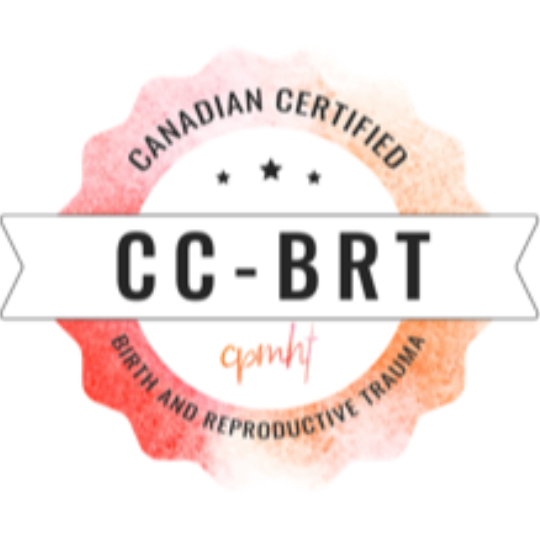At some point, we all experience an overwhelming event – something that challenges our capacity to cope, and maybe shapes us in a fundamental way. Unfortunately, some will experience many of these events early in their lives, and sometimes so consistently that there was no time to “recover” in between.
We can call these events traumas, with a “big T” or “little t.” We can use labels like PTSD or Complex-PTSD, or attachment disorders. Although I believe in the value of diagnosis – when it’s done well – my unpopular opinion is that when it comes to our wellbeing, what truly matters is the stories we tell, and most importantly how we tell them.
I think of trauma as a response, not an event. Trauma occurs when our nervous system is overwhelmed by the demands or implications of a situation. In this way, it doesn’t matter what happened. What matters is how you lived it and what is left of it. Regardless of the event, the trauma experience can disrupt our life narrative. Especially when it occurs early in life, at the hand of caregivers, or when occurs repeatedly. The trauma response can make a mess of our perceptions and shape the way we experience the world.
I use the analogy of a messy closet. For those who catch the reference, think of Monica’s closet in Friends—despite being an exceptionally organized and tidy person, she has one corner of her life that’s a complete mess, and she’s gone to great lengths to keep it hidden. In our life narrative, trauma is a concealed mess. This messy closet is so packed with random bits and pieces of moments, relationships, emotions, beliefs and memories, that simply thinking about it makes it all tumble down onto the ground. There are things pushed so far back that we can’t remember – others that keep showing up no matter how hard we try to set them aside. And just like Monica Geller, many of us work very hard to keep it a secret, hidden behind several locks.
In my private practice, clients will begin their session talking about one event, and jump to another, and then forget what my question was. “I’m all over the place,” I hear so often. Or “I don’t remember,” “I don’t want to go there” ; those are all signs of a messy closet. Simply listening to the way my clients tell me their story gives me such insight into their experience.
Research backs up my view – a trained clinician can determine our attachment patterns through our narrative. The way that we talk about our early childhood experiences and caregivers reveals our attachment patterns. Even samples of psychotherapy transcripts can reliably reveal a person’s relational style.
Part of my role as the psychologist is to support clients in organizing their narrative – their closet. We prepare for the emotional journey, take things out, sort through memories and beliefs, get rid of what is not needed, fix what is broken, and put it back together coherently.
That’s the key: coherence. A coherent narrative provides sufficient relevant detail, is supported by available evidence, and is well organized. For the curious ones, these follow Grice’s maxims of effective communication.
A narrative can be about a memory, an event or a relationship. When a client and I work through a narrative, the process of sifting through, organizing, correcting and so often just sitting with the mess, makes space. It allows compassion and change. When a narrative is organized, the events and emotions tie together and the experiences are integrated. We no longer avoid it actively. We can revisit it without feeling overwhelmed. The event becomes part of our life story, not the whole thing.
It’s true that no amount of talking through and sorting will change the past. There is grief there that also needs to be faced. However, we can choose the space and power that it has, while respecting the way it contributes to the person we are today.
The wonderful thing about stories is that they change over time. We can organize and re-organize our mind space as much as we need to. A story that would have mattered to us 10 years ago might not take the same space today.
And that’s okay.
There are many assumptions about what it is like to be a clinical psychologist. It’s true that I’m not the person people come to when life is rosy. It’s also true that my job requires emotional grit. What is not true about being a psychologist is that I simply spend my day hearing people’s problems. My clients come to me with courage and with their stories, and I have the privilege of helping them make sense and meaning of it all.
My intention with this website, resources, and podcast [NAME] is to offer insights that will inspire you to pause with curiosity, and bits of knowledge that will help you sort through a little bit of your closet at a time. Nothing here is magic – what you make of it is up to you.
References
Grice, P. (1989). Studies in the way of words. Harvard University Press
Reiner, I. C., Fremmer-Bombik, E., Beutel, M. E., Steele, M., & Steele, H. (2013). Die Adult Attachment Interview – Grundlagen, Anwendungen und Einsatzmöglichkeiten im klinischen Alltag [The Adult Attachment Interview – fundamentals, use, and applications in clinical work]. Zeitschrift fur Psychosomatische Medizin und Psychotherapie, 59(3), 231–246.
Talia, A., Miller-Bottome, M., & Daniel, S. I. (2017). Assessing Attachment in Psychotherapy: Validation of the Patient Attachment Coding System (PACS). Clinical psychology & psychotherapy, 24(1), 149–161. https://doi.org/10.1002/cpp.1990


